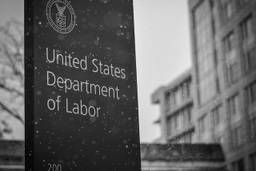American Hunger-Related Healthcare Costs Exceeded $160 Billion in 2014, According to New Study
Food insecurity, especially for children, remains near record high despite the Great Recession’s official end.
Elizabeth Grossman

While the official end of the Great Recession is a full five years behind us, there are now nearly 12 million more Americans who lack enough resources to access adequate food than there were in 2007, a number that has only improved slightly since United States food insecurity peaked at over 21 percent in 2009. These statistics alone are disturbing. But as detailed in a new study released today as part of Bread for the World Institute’s 2016 Hunger Report, absence of food security in the U.S. carries enormous healthcare costs, more than $160 billion in 2014.
Using data from the U.S. Department of Agriculture (USDA), Census Bureau and research on food security published in peer-reviewed academic journals between 2005 and 2015, a team of researchers led by Boston University School of Medicine associate professor of pediatrics John Cook, estimated these health care costs by looking at the costs of treating diseases and health conditions associated with household food insecurity plus earnings lost when people took time off work because of these illnesses or to care for family members with illnesses related to food insecurity.
As Cook, who is also research scientist and principal investigator with Children’s Health Watch, explained to In These Times, lack of access to adequate food does not necessarily directly cause a particular illness but “plays a role in that disease occurring.” Years of research consistently shows food insecurity increases the risk for a range of health problems. These risks are particularly great for children but poor and inadequate nutrition also increases risk for adult health problems, including obesity and chronic diseases, among them diabetes, hypertension and cardiovascular disease. It also exacerbates illness duration and severity – in some cases simply because people lack money for medication – and therefore treatment costs.
Putting this in a broader economic context, Bread for the World Institute points out that the U.S. “spends more per capita on health care than any other high-income country but compares poorly with these others on key population health indicators such as life expectancy and child survival. This is due,” report authors, “in part to our tolerance as a nation, for higher levels of poverty and hunger.”
Currently about 50 million Americans meet the USDA criteria for food insecurity. About 15 million of them are children. In 2014, 19.2 percent of U.S. households with children were food insecure – about a third higher than households without. The Boston University research team found if the costs of special education for children whose learning abilities are aversely affected by food insecurity are factored in along with related education impacts for high-schoolers, the $160 billion rose by an additional nearly $18 billion. This brings a total estimate of direct and indirect health care costs of U.S. food insecurity in 2014 to $178.93 billion.
Impacts on children are particularly severe
Children whose households lack adequate food are twice as likely to be in poor health and nearly one-and-a-half times more likely to have asthma. Poor nutrition in early childhood has also been linked to later life health problems, including diabetes and cardiovascular disease. These children are also likely to be hospitalized more often. And as the American Academy of Pediatrics noted in its October 2015 policy statement recommending that pediatricians screen all children for food insecurity, “The health effects of hunger on children are pervasive and long-lasting” and the effects of “not getting enough healthy food early in life…can last well into adulthood.”
This “dietary deprivation shows up in subtle ways,” said assistant chief of pediatrics at Hennepin County Medical Center and University of Minnesota assistant professor of pediatrics Diana Cutts. It shows up “[in] developmental delays, more frequent illness, illnesses that last longer and iron deficiency anemia,” Cutts explained. “It’s very insidious,” she said.
“It’s really a myth that we can identify a child as food insecure by looking at them. This was the case when Robert Kennedy toured the South in the 1960s, when children appeared frail. This is not the case in this day and age,” said Cutts who is also a founding member of Children’s Health Watch. “The only way we can identify food insecurity is by asking about it,” she explained. “It’s a real delusion that clinicians will identify it otherwise.”
Among the subtle and insidious effects of childhood food insecurity are its not only physiological but also psychological impacts on children’s neurological health and development. Inadequate nutrition early in life can impair learning ability and adversely impact behavior. Household food insecurity also creates stress that can take a physical toll on both adults but particularly on children who are especially vulnerable to these effects since they’re at sensitive stages of development. It’s now been shown that stress can have not only neurological impacts but also exacerbate effects of environmental contaminants, including lead and air pollutants.
A recent study by Rice University researchers based on information from a nationwide U.S. Department of Education survey tracking thousands of five and six year olds across the U.S. during the recession found that children whose families were food insecure were more likely to have behavior problems — more likely to act out, have poor interpersonal skills and poor self-control. As the American Academy of Pediatrics notes, such problems can last from preschool through adolescence, setting the stage for lifelong academic and other difficulties.
Underscoring Cutts’ point about the challenges of identifying food insecurity, Bread for the World Institute explains, “ Food insecurity and hunger do not mean the same thing, but they are indivisible. Food insecurity means the specter of hunger is always present, if not on the attack then lurking close by.”
And notes Cook, addressing food insecurity affects everyone. “Even if we don’t need [this help] it benefits all of us. If my child is sitting next to your child and my child didn’t have breakfast and is likely to disrupt the class, that affects the whole class,” he says.
What’s to be done?
“Federal food assistance programs are very important,” said Cook. “But together they aren’t able to solve this problem. Part of the reason is the ebb and flow off the problem combined with too much ebb and flow in the resources. Every year we have to fight to keep the federal system funded,” he explained. “When Congress refuses to fund SNAP [the Supplemental Nutrition Assistance Program commonly referred to as food stamps], it makes it really difficult to deal with food insecurity,” said Cook.
While SNAP benefits were increased between 2009 and 2013, they were cut in 2014 so they are now about $40 a week per person. According to the Center on Budget and Policy Priorities (CBPP), cuts in tax credits for low- and modest-income working families proposed by Republicans for 2016 are roughly the same as the estimated healthcare costs of current food insecurity. These cuts, says CBPP would push about 16 million Americans, including approximately 8 million children, deeper into poverty.
“WIC [the Special Supplemental Nutrition Program for Women, Infants, and Children], SNAP, school feeding programs, summer and childcare feeding programs are all really proven to provide benefits in terms of improved dietary intake and improved health,” says Cutts. Making sure families have easy access to these programs, particularly when children are out of school, is also key.
Adding to the current high healthcare costs associated with U.S. food insecurity, write Cook and colleagues, are “the very high unemployment levels during and after the Great Recession…unparalleled expansion of the number of the long-term unemployed,” along with “major increases in the number of “involuntary part time workers” – jobs that typically don’t include benefits and have unpredictable schedules that compound child and other family care needs.
The upshot, explained Cook, are “volatile incomes” and “episodic food insecurity” and needs that may not necessarily be met by public food assistance programs. As a result, private food assistance programs have become what Cook calls “the maintenance system” that people depend on “chronically or episodically.”
To really solve U.S. food insecurity, says Melissa Boteach, vice president of the Center for American Progress’s poverty to prosperity program, “We need more good jobs.” Increasing the minimum wage even to $12 as proposed by Senators Patty Murray (D-Wash.) and Robert Scott (D-Va.) would save some $53 billion in nutrition assistance costs, says Boteach. “Good jobs,” she says, are an important “pillar in the anti-hunger agenda.” In addition to raising the minimum wage, says Boteach, we also need to improve what she calls “abusive scheduling” that will provide greater income stability and to improve people’s ability to join a union.
“We also need to strengthen assistance programs,” so they can better respond when people need assistance, says Boteach. Part of this means bolstering existing food assistance, increasing what they provide so people can buy better food and not run out at the end of the month, an effect that’s been linked directly to adverse health outcomes – including spikes in emergency room visits for children and for adults with chronic illnesses such as diabetes.
“What is clear is that the health-related costs of food insecurity and hunger are high, and are likely to increase unless addressed,” write Cook and colleagues. These, they say, “are systemic problems that result from numerous market, policy, and leadership failures.”
“The costs in the report are nowhere near the total costs,” Cook told In These Times. Failing to address these issues, he explained affects everyone. “There’s no them in this situation, there is only us.”







